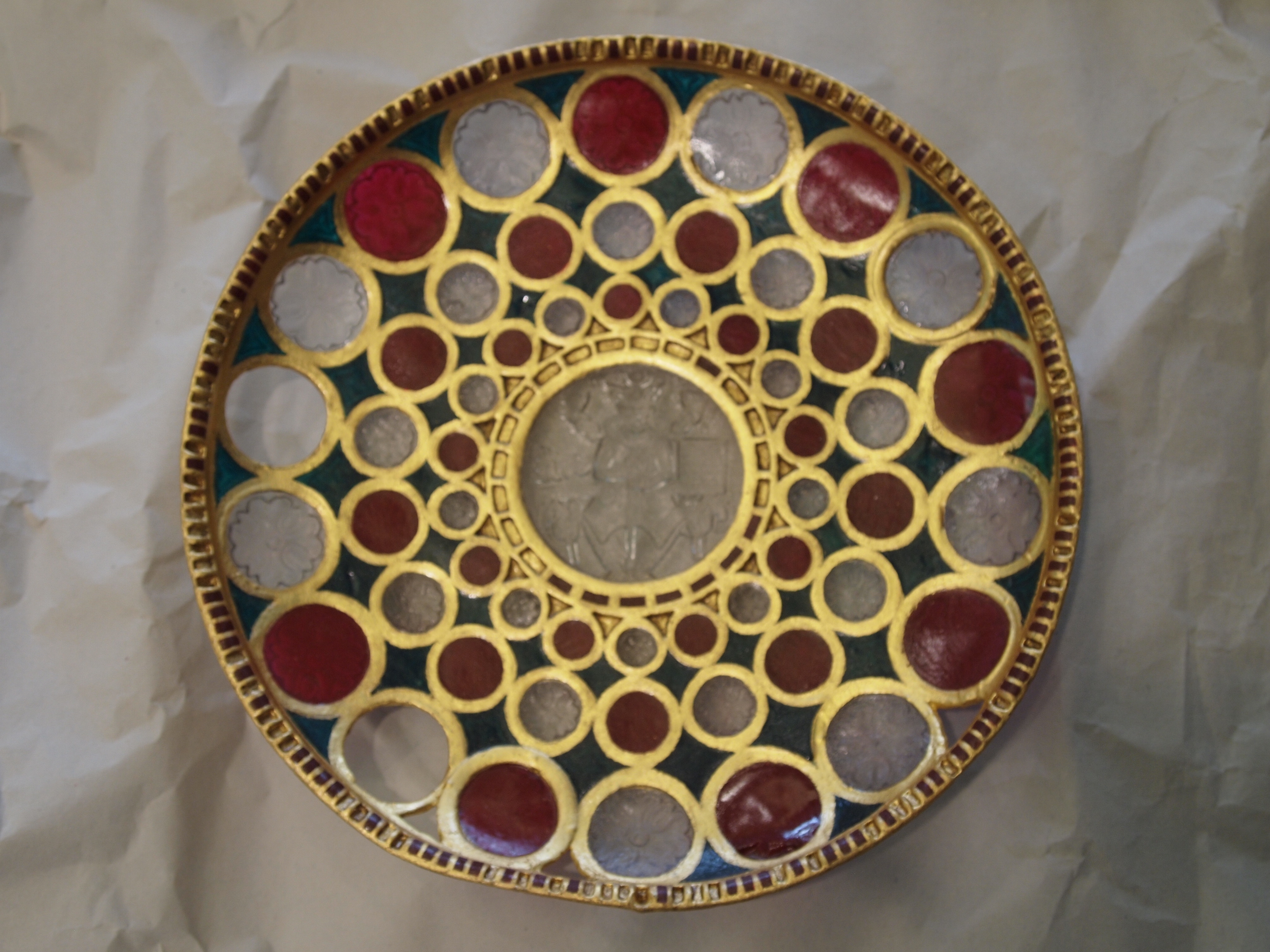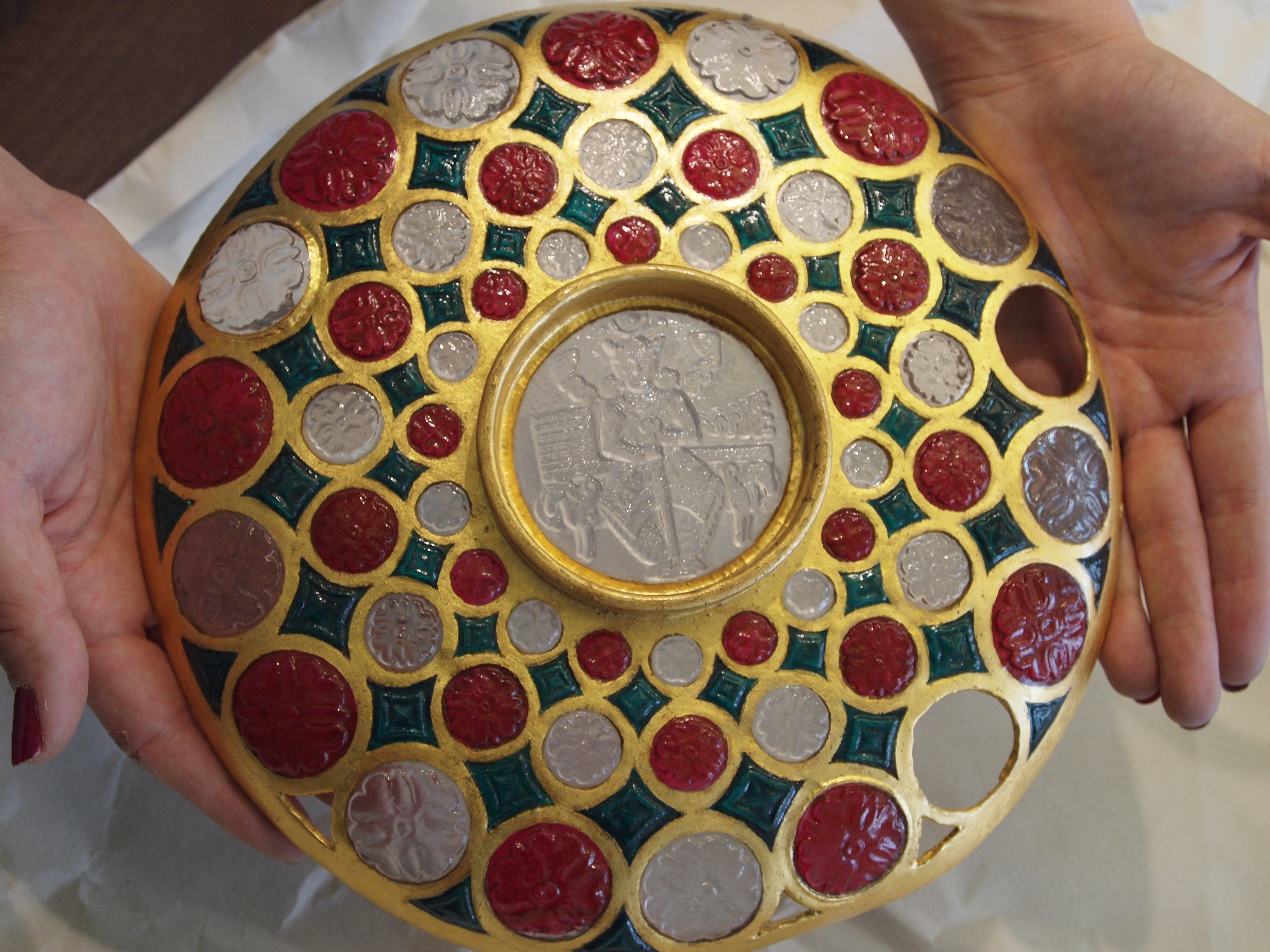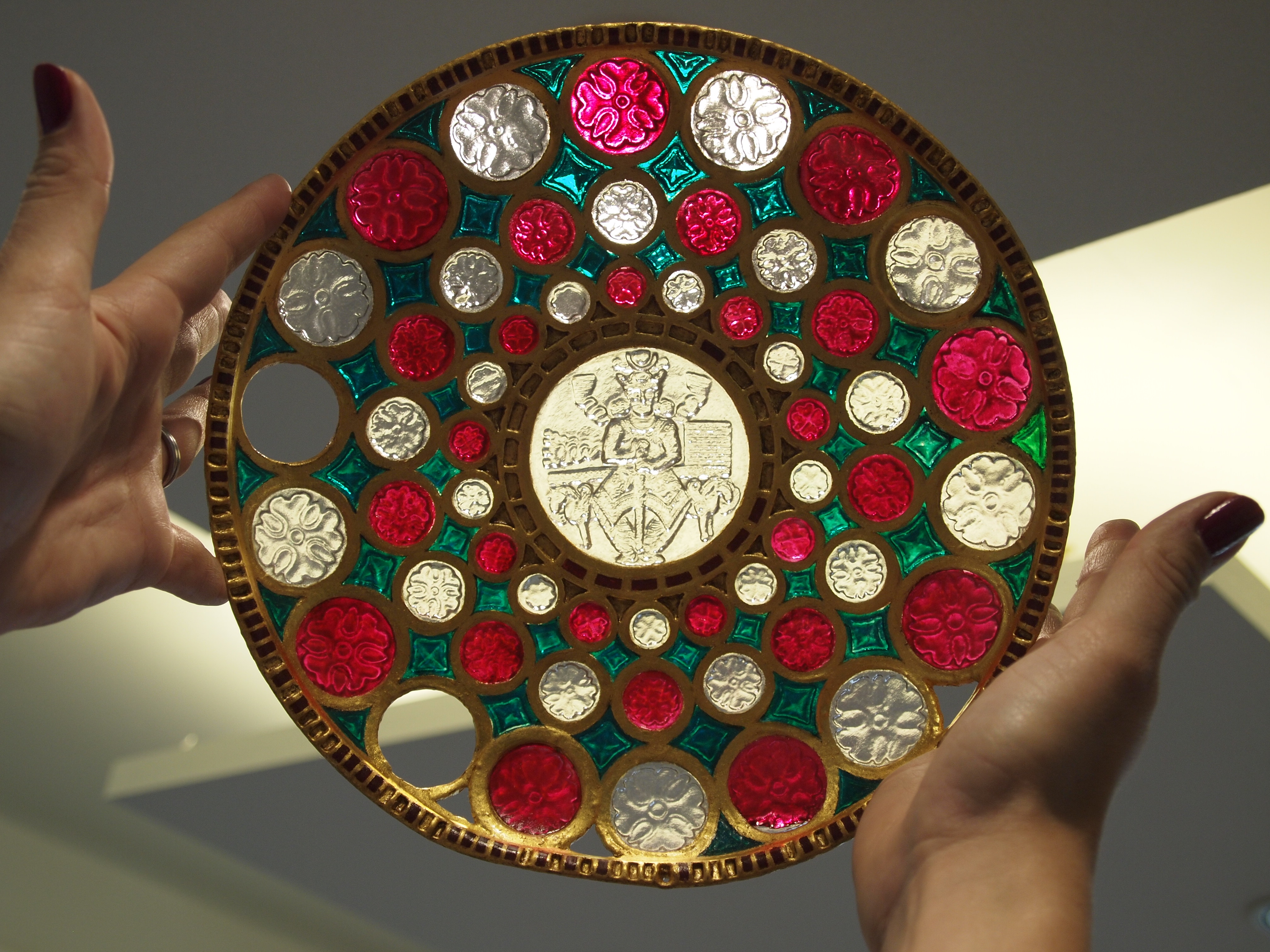Imagining the Divine (Khosro Cup Replication Project)
hrough the support of The Soudavar Memorial Foundation, it was possible to take the extraordinary opportunity to make a 3D image and model of the Khosro Cup , perhaps the most famous piece of extant Sasanian art. By the suggestion of the Director of the Department of Coins, Medals and Antiques at the Bibliothèque nationale de France, Dr Frédérique Duyrat, the British Museum and Oxford University research project Empires of Faith (funded by the Leverhulme Trust,) were able to undertake this project to contribute to an exhibition at the Ashmolean Museum, Oxford, entitled Imagining the Divine: art and the rise of world religions .
Being able to include a version of the Khosro Cup added a vital element to the exhibition’s narrative of encounters between the arts of different religious cultures, whereby we could present the story of early Islamic caliphs building on the ideology of Sasanian sacred kingship, and the importance of Sasanian rulers such as Khosro I in later Persian culture. This object’s mysterious history, during which it was at some stage assigned a Biblical identity as the Cup of Solomon, added a further contribution to the narrative of the movement of imagery between religious communities.
By using the very latest developments in 3D imaging and printing technologies, the model conveys the sense of the original’s transparency and translucency, size, shape, and historical damage, as well as indicating the colours of the materials and the carved decoration.
The grant from the SMF also allowed for even greater access to the Khosro Cup for the general public, beyond the longevity of the exhibition and the scope of Oxford via the creation of a coloured version of the 3D scan, which is accessible to the public here:
https://sketchfab.com/models/fe5a660d7abd41b99e9c51c1668c166b
Responses to this project have been extremely positive, raising awareness of the potential of 3D imaging technologies particularly for public engagement as well as promoting Sasanian culture. Visitors to the Imagining the Divine exhibition were enthused by different means of communicating aspects of ancient history, art, and archaeology within a museum context: the inclusion of a 3D printed object fascinated many, as well as attracting them to Sasanian art. After Imagining the Divine closes, the model Khosro Cup will be joining the permanent collection of the Ashmolean’s Cast Gallery, where it will continue to raise interest in Sasanian history and the arts of the Persian Empire for students and the general public.
The KCRP is also indebted to the Bibliothéque nationale de France; Lorne Thyssen Fund for Ancient World Topics at Wolfson College, Oxford; The Leverhulme Trust; ThinkSee3D Ltd; Creaform Ltd; IPF Ltd; Cliveden Conservation; and colleagues at The British Museum and Ashmolean Museum.
For more details on the making of the replica, please visit:
https://empiresoffaith.com/exhibition/the-khosro-cup/
or
https://www.ashmolean.org/khosrocup
Further reading:
Wood, R. 2017, ‘The Khosro Cup’, in J. Elsner & S. Lenk (eds), Imagining the Divine: art and the rise of world religions (Ashmolean)
Wood, R. 2018, ‘The Khosro Cup Replication Project: digital imaging for an exhibition’ in K. Kelley & R.
Wood forthcoming 2018, Digital Imaging of Artefacts: Developments in Methods and Aims (Archaeopress).
Khosro Cup Replication Project
Exhibition Report by Dr Rachel Wood, Corpus Christi College and Wolfson College, University of Oxford.
As the Imagining the Divine exhibition at the Ashmolean Museum comes to a close, it is with great pleasure and thanks that I can report on the success of the Khosro Cup Replication Project (KCRP) that was made possible through the generous support of the Soudavar Memorial Foundation. The model conveys the sense of the original’s transparency and translucency, size, shape, and historical damage, as well as indicating the colours of the materials and the carved decoration.
The grant from the SMF also allowed for even greater access to the Khosro Cup for the general public and for study via the creation of a coloured version of the 3D scan, which is accessible to the public here: https://sketchfab.com/models/fe5a660d7abd41b99e9c51c1668c166b
The KCRP was presented to enthusiastic audiences in Oxford at Wolfson College, Corpus Christi College, and the Ashmolean Museum, and in London, and also prompted a workshop at Wolfson that brought together speakers on many aspects of the latest developments in digital imaging of artefacts (to be published later this year by Archaeopress: Kelley & Wood 2018). The response from these audiences was extremely positive, raising awareness of the potential of 3D imaging technologies particularly for public engagement. A survey of visitors to the Imagining the Divine exhibition, which has attracted over 17,000 visitors before the final tally at its close, demonstrated the keen interest of the general public in different means of communicating aspects of ancient history, art, and archaeology – the inclusion of a 3D-printed object fascinated many, as well as attracting them to Sasanian art. They not only commented on the aesthetic quality that the model contributed to the exhibition, but also their surprise at an object of such craftsmanship as the original Khosro Cup. As hoped, after Imagining the Divine closes, the model Khosro Cup will be joining the permanent collection of the Ashmolean’s Cast Gallery, where it will continue to raise interest in Sasanian history
and the arts of the Persian Empire for students and the general public.




